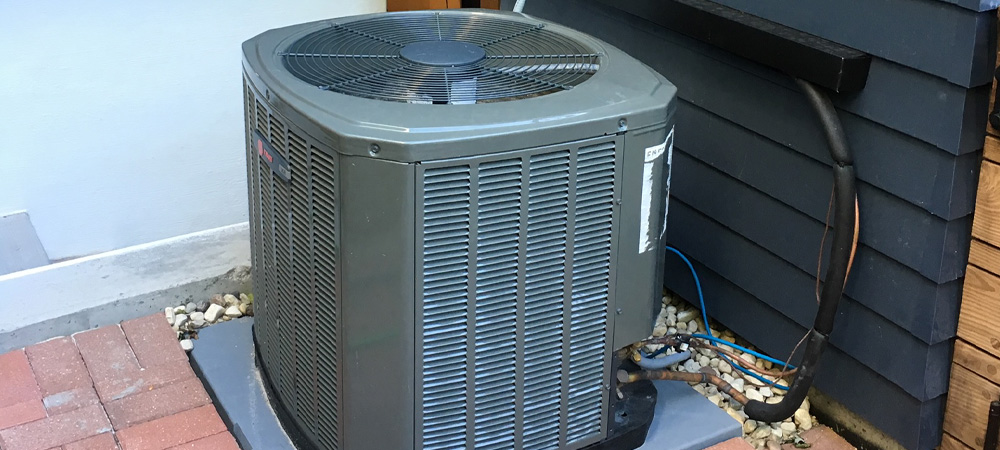Air Conditioning Repair Fundamentals Explained
Air Conditioning Repair Fundamentals Explained
Blog Article
Repair Air Conditioning System: Specialist Cooling System Repair Guarantees Your Home Stays Comfortable Throughout The Most Popular Days
Common A/c Problems
Have you ever felt that abrupt rush of warm air just when you anticipated a cool breeze? It's aggravating, isn't it? Many homeowners face this predicament, often uninformed of what lurks below the surface of their air conditioning system. Let's unwind the mystery behind a few of the most regular concerns that require timely air conditioning repair.
Why Won't My Air Conditioning Cool Properly?
When your air conditioning unit blows lukewarm air instead of a revitalizing chill, it's a clear indication something's off. A blocked filter or low refrigerant levels often play the bad guy here. Imagine attempting to breathe through a scarf on a hot day-- that's what a filthy filter does to your system. Ever wondered why your energy costs increase when the cooling drops? That's your a/c struggling more difficult to compensate for inadequacies.
Odd Noises and What They Mean
Clicking, buzzing, or rattling sounds aren't just sounds-- they're cries for aid. A loose belt or a stopping working motor might be the culprits. One house owner recounted how a consistent grinding sound ended up being a worn-out compressor, conserving them from a total more info breakdown by acting quickly.
Common Problems at a Glimpse
| Sign | Likely Trigger | Quick Repair |
|---|---|---|
| Warm Air | Low refrigerant or dirty filter | Change filter, check refrigerant levels |
| Water Leakages | Obstructed drain line or frozen coils | Clear drain line, thaw coils |
| Uncommon Noises | Loose parts or motor issues | Tighten parts, examine motor |
Is Your a/c Cycling On and Off?
Short biking is more than an annoyance; it can considerably decrease your system's life expectancy. This could signal an extra-large unit or a thermostat glitch. Have you discovered your system turning on and off like a flickering light? Don't overlook it. It's a subtle hint prompting you to call in the experts before it turns into a pricey catastrophe.
- Filthy filters and coils cause airflow issues.
- Thermostat breakdowns lead to irregular temperatures.
- Electrical problems can stop your a/c from starting.
Essential Tools for Cooling Repair Work

Ever stood in front of a vast air conditioner system questioning which tool will open the secret? The right instruments can make all the difference in between a fast repair and an endless afternoon of frustration. A digital manifold gauge set isn't simply an elegant gizmo; it's the detective's magnifying glass in the world of refrigerant pressure. Its accuracy assists pinpoint leakages or imbalances that a casual glimpse might miss.
When handling stubborn or rusted components, a quality tubing cutter deserves its weight in gold. It slices through copper pipelines cleanly, preventing damage that might cause costly leaks. Have you ever tried to flex copper tubing by hand only to end up with kinks? Avoiding this requires specialized flexing tools developed to maintain the pipe's stability.
Tools That Professionals Swear By
- Air pump: Necessary for getting rid of moisture and air from the system before recharging refrigerant, making sure ideal performance.
- Leak detector: A must-have for capturing invisible refrigerant leaks that can cause system ineffectiveness.
- Multimeter: Beyond measuring voltage, it's vital for detecting electrical faults within the air conditioner's control system.
- Fin comb: A small yet mighty tool that aligns bent condenser fins, boosting airflow and efficiency.
Pro Tips for Utilizing Cooling Repair Tools
- Always confirm your gauge readings against manufacturer specifications; even seasoned techs confirm to avoid pricey misdiagnoses.
- When using an air pump, make sure all valves and hose pipes are airtight; a small leakage can mess up the evacuation process.
- Clean your fin comb regularly. Dust and grime can trigger it to snag, destructive fragile fins further.
In the heat of summertime, a malfunctioning compressor or clogged up filter can feel like a ticking time bomb. Equipped with the right tools and knowledge, the repair ends up being less of an experience and more of a gratifying puzzle fixed. Isn't it curious how a well-calibrated gauge or a simple leak detector can change the whole outcome?
Step-by-Step Repair Process
Ever observed how your cooling unit starts to sputter, hardly whispering the cool breeze it as soon as delivered? The first relocation is a comprehensive medical diagnosis-- because guessing just wastes time and resources. You may start by inspecting the thermostat settings, but sometimes the genuine perpetrator lurks deeper.
1. Initial Assessment and Diagnostic

Begin by powering off the system to prevent shocks. Open the gain access to panels and aesthetically inspect for scorched wires, blocked filters, or ice buildup. A common oversight is ignoring the condenser coils; dust and dirt here can choke effectiveness. Use a multimeter to check electrical parts and verify if the compressor is getting power.
2. Recognizing Refrigerant Issues
Does the system blow warm air? That's often an indication of low refrigerant levels or leaks. Professionals use a manifold gauge set to measure pressure precisely. Keep in mind, overcharging or undercharging the system can trigger permanent damage-- accurate measurement is essential.
3. Cleaning and Element Replacement
Often, a simple coil cleansing revives the system. Other times, it requires switching out capacitors, contactors, or fan motors. Replacing these parts involves mindful disassembly and reassembly; skipping actions can result in additional breakdowns.
4. System Testing and Calibration
Once repair work are made, switch the system back on and observe its behavior. Step the temperature level drop across the evaporator coil-- it ought to be approximately 15-20 ° F. If not, recalibrate the thermostat or look for airflow blockages.
Specialist Tips
Air Conditioning In [:location]Air Conditioning Contractor [:location]
Air Conditioning In [:location]
Can Nest Thermostat Replace Heating And Air Conditioning [:location]
Air Conditioning Services [:location]
- Avoid running the compressor without refrigerant-- this stress out the motor rapidly.
- Use a UV dye to locate evasive leaks; they're often hidden in hard-to-reach locations.
- Never ignore the drain line-- obstructions here can cause water damage and system failure.
- Use insulated gloves when handling capacitors; they maintain charge and can provide a nasty shock.
Securing Against Abrupt Breakdowns
Have you ever wondered why your ac system sputters to a halt right at the peak of summertime? The reality is, overlooking routine upkeep often invites unforeseen failures. Dust, debris, and damaged components wage a quiet war inside your system. Preventive maintenance is the secret weapon-- catching small problems before they spiral out of control.
Expert Tips for Keeping Your A/c in Top Shape
- Clean or replace filters regular monthly: A stopped up filter chokes air flow, requiring the system to work overtime and accelerating wear.
- Check coil fins: Bent fins restrict air passage, just like a traffic congestion in your cooling system. Use a fin comb to correct them thoroughly.
- Examine refrigerant levels: Low refrigerant can trigger the compressor to overheat, a precursor to expensive repairs.
- Clear the condensate drain: Obstructions here can result in water damage and mold development, a hidden perpetrator behind remaining odors.
- Examine electrical connections: Loose electrical wiring or corroded terminals often trigger periodic failures, a subtle warning sign.
When Was the Last Time You Listened to Your a/c?
That faint rattling or uncommon hum may seem trivial, however it's a precursor to larger mechanical troubles. One summer, a customer pointed out a soft buzzing noise. A quick assessment exposed a loose fan blade-- simple to repair, yet left ignored, it might have shattered the motor. Minutes like these highlight the worth of regular checks.
Quick List for Seasonal Prep
| Action | Frequency | Why It Matters |
|---|---|---|
| Filter cleaning/replacement | Every thirty days | Maintains air flow and performance |
| Coil and fin examination | Twice a year | Avoids air flow constraints |
| Refrigerant level check | Every year | Ensures proper cooling capability |
| Drain pipes line cleaning | Every 6 months | Avoids water damage and mold |
| Electrical system evaluation | Each year | Avoids abrupt shutdowns |
Pro Suggestion: Beyond the Fundamentals
Did you know that gently lubing the fan motor bearings annually can extend their lifespan? It's a detail often overlooked however essential. Also, shading your outdoor unit from direct sunshine can reduce the compressor's work, discreetly boosting longevity. Remember, the health of your ac system is a reflection of the attention you offer it before it shouts for aid.
Report this page